 2019-09-18
2019-09-18
Plessey, the UK-based optoelectronic technology solutions developer, said that it has transferred its business focus from high-powered solid-state lighting, horticultural lighting and healthcare/ safety sensors sector to GaN-on-Si monolithic Micro LED display technology. The company is disrupting the global display market with a new generation of Augmented Reality (AR) devices and display solutions based on the Micro LED technology.
(Image: Plessey)
Featured with high brightness, high contrast, lower power consumption, fast refresh time and the capabilities of int...
Continue reading →
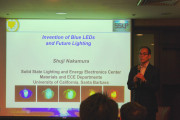 2019-09-17
2019-09-17
Shuiji Nakamura, the blue LED inventor and the winner of Nobel Prize in Physics in 2014, visited Taiwan last week and delivered speeches in Taiwan’s National Tsing Hua University and Chung Hsing University, as well as in Micro LED company PlayNitride. Nakamura shared his research experiences in Japan and the U.S. on the way of blue LED development and pointed out the trends and potentials of the LED industry.
Shuiji Nakamura was invited to PlayNitride
Back in the 1990s, ZnSe was the material that the majority believed to be critical for...
Continue reading →
 2019-09-16
2019-09-16
The Fraunhofer Institute for Applied Polymer Research IAP in Germany and Korea Electronics Technology Institute (KETI) announced their cooperation on the development of printed quantum dots (QD) color filters for Micro LED displays.
Dr. Youngsam Kim, President of KETI and Prof. Alexander Böker, Head of the Fraunhofer IAP seal the continuation of their cooperation.
Quantum dots are nanocrystals with optical, magnetic or electronic properties. These nanocrystals have a diameter of about 1-10 nm. The small diameter causes so-called qua...
Continue reading →
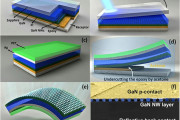 2019-09-11
2019-09-11
After publishing the research paper demonstrating Micro LED integration with amorphous silicon TFTs, the research team from the University of Waterloo in Canada further revealed its approach of transferring InGaN nanowire LEDs on flexible substrate without degrading optical performance of the LEDs when the substrate bends.
Researchers use vertical GaN nanowire LEDs to separate the electrically active region of the LEDs from the bending platform. LEDs are transferred onto flexible polyethylene terephthalate (PET) with a “paste and cut” process...
Continue reading →
 2019-09-09
2019-09-09
Patently Apple reported an Apple’s patent published in Europe titled “Display with Embedded Pixel Driver Chips” describing the method of fabricating Micro LED display panels with a display integration scheme that embed an array of LEDs on substrates with the front side up.
In the description of the patent application, Apple used figures of flexible and foldable display to illustrate how the approach of LED pixel driver chips can be embedded on different display panels.
(Image: World Intellectural Property Organization)
With the patent app...
Continue reading →
 2019-09-09
2019-09-09
iBeam Materials, a U.S.-based company focusing on technologies for crystal-aligned coatings utilizing ion-beam-assisted deposition (IBAD) texturing, announced that Samsung Venture has invested in the company as Samsung’s strategic investments in Micro LED. iBeam pioneers in the development of ion-beam crystal alignment of thin layers deposited on a variety of substrates for optoelectronic devices. Its breakthrough in LED technology enables LEDs to be manufactured on large-area substrates as opposed to the much smaller single-crystal wafers currently used in th...
Continue reading →
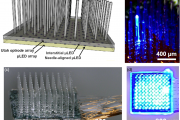 2019-09-06
2019-09-06
A research team formed by specialists in photonics, electrical and computer engineering and medicine jointly developed a device which integrated a 10x10 array of glass microneedles with Micro LED to deliver light for stimulating neurons in brains of mammals.
Researchers from the University of Strathclyde, University of Utah and Fienstein Institute for Medical Research aim to advance optogenetic studies by connecting neural activities to specific cognitive functions in large mammals.
In the study, the researchers combined a glass microneedle array with a custom fabricated...
Continue reading →
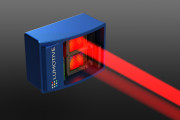 2019-09-05
2019-09-05
Lumotive, the Bill Gates-funded startup developing LiDAR systems for autonomous vehicles, and Himax Display, a subsidiary of Himax Technologies, announced their collaboration on beam steering technology in LiDAR systems that integrates Himax’s Liquid-Crystal-On-Silicon (LCOS) technology with Lumotive’s patented Liquid Crystal Metasurfaces™ (LCMs). With the partnership, the two companies aim to improve the performance, reliability and cost of LiDAR systems for enabling advanced ADAS and automotive vehicle technologies.
Lumotive lev...
Continue reading →
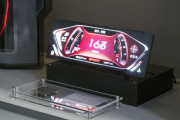 2019-09-04
2019-09-04
Mini LED has been viewed as the technology to confront OLED in display applications. Industry players from Taiwan possessing expertise in LEDs and LCD see the opportunity and are accelerating their technology development, aiming to boost the LED industry. Chip maker Epistar and vertical integrated LED company Lextar both demonstrated a wide range of Mini LED products including Mini LED backlit displays for gaming notebook, monitors, automotive panels and large sized Mini LED RGB displays for outdoor signage. Automotive applications are the targe...
Continue reading →
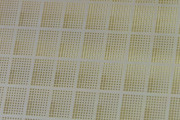 2019-09-03
2019-09-03
A research team from the University of Waterloo published their result of a successful demonstration which integrates amorphous silicon TFTs and Micro LED on large-area flexible substrates. With the approach, manufacturing of flexible Micro LED for wearables and large size displays with lower cost could be achieved. Researchers combined conventional low-temperature amorphous silicon TFT fabrication process with a laser lift-off transfer process to integrate blue GaN-based Micro LEDs with flexible TFT pixel circuits. According to the study, the selective l...
Continue reading →
 2019-08-26
2019-08-26
The annual Display International Touch Taiwan is taking place this week with exhibitors from all over the world showcasing their latest developments in display technology.
Taiwan-based panel makers AUO and Innolux are both showing their innovative display products at the show including Mini LED backlight display, Micro LED displays and more.
(Image: AUO)
AUO announced that it will unveil several new display technologies covering Mini LED backlit 8K TVs as well as gaming monitors, notebook panels and VR wearable displays adopting Mini LED backlig...
Continue reading →
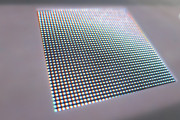 2019-08-19
2019-08-19
The 8th Touch Taiwan will begin next week on August 28 at Taipei Nangang Exhibition Hall. This year, with the expanding exhibition zone of Micro LED and Mini LED Product and Solution, many expect to see innovative technologies and applications at the show.
There will be 37 exhibitors including Epistar, Lextar, Macroblock, ASM Pacific Technology, Tory, Topcon showcasing their latest development of Micro LED and Mini LED at Touch Taiwan 2019.
Exhibitors of the supply chain will present their technology related to Micro/Mini LED from upstream ...
Continue reading →
 2019-08-12
2019-08-12
When and in what product Apple will adopt Micro LED display technology has been an ongoing topic for the industry. Apple Watch and AR/VR smart glasses were the two products that are most likely to adopt Micro LED according to industry rumors as well as Apple’s revealed patents.
On August 1, 2019, a new Micro LED display patent applied by Apple was published in Europe, reported Patently Apple. The patent abstract described that it states the structure and methods of Micro LED display fabrication, including how LEDs are transferred to a carrier subst...
Continue reading →
 2019-08-06
2019-08-06
The European Union announced an establishment of a new three-year project, ELIoT (Enhance Lighting for the Internet of Things), which aims to develop mass market Internet of Things (IoT) solutions using LiFi.
With LiFi, the ELIoT consortium will explore a networked wireless communication technology operating in the previously unused light spectrum, besides Wi-Fi and cellular radio. LiFi can be used in environments where certain radiofrequencies are not possible or allowed.
For outdoor usage, it could offer high bandwidth point-to-point links from rooftops, ...
Continue reading →
2019-08-01
Shulin District, New Taipei City, Taiwan, July 30, 2019-Everlight has filed invalidation trial procedures against Nichia ‘s YAG patents in United States, Australia, China and Taiwan. Everlight has received these winning judgements. Supreme Court of the United States has decided that the asserted claims of Nichia’s US YAG patents US5,998,925 and US7,531,960 are invalid. Full Court of Federal Court of Australia has decided that the asserted claims of Nichia’s Australia YAG patent 720234 are invalid. On May 9, 2019, Beijing Inte...
Continue reading →
 2019-08-01
2019-08-01
Scientists have demonstrated blue light’s anti-microbial and anti-inflammatory effects and they turned it into a flexible bandage to heal wounds. MEDILIGHT, a European research project which aims to develop smart and wearable medical devices, have presented a prototype of the LED embedded light solution for treating chronic wounds. Within the framework of the European project MEDILIGHT, seven partners including research teams from Germany France, Switzerland, Cyprus, the UK and Czech, were coordinated by the Technical University of Berlin (TUB)....
Continue reading →
 2019-07-31
2019-07-31
LASER COMPONENTS, specialized provider of components and services in the laser
and optoelectronics industry, has been named a “Best of Sensors” 2019 Award winner
in the Automotive/Autonomous category. The company’s QuickSwitch Pulsed Laser Diode
(PLD) was recognized as one of the Innovative Products of the Year 2019 which highlights
cutting-edge advancements and achievements that are moving the sensors industry forward.
Across fourteen categories, the prestigious awards were presented by the Editor of Fierce-
Electronics during Sensors Expo & Conference 2019, held June 25-27, 2019 in San Jose,
California.
Continue reading →
 2019-07-25
2019-07-25
Nanotechnology development company UbiQD announced an optical fiber-coupled luminescent concentrator technology as a new tool for optimizing light in controlled environments, enabling light-guiding to future UbiGro™ spectrum-control greenhouse products.
"We continue to push the envelope with light optimization in greenhouses," said Dr. Hunter McDaniel, CEO of UbiQD. "One exciting potential use case is in vertical farming, where you could use our quantum dot-based luminescent fibers to harvest sunlight and optimally transmit that energy to multiple la...
Continue reading →
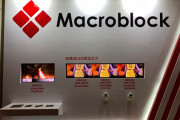 2019-07-25
2019-07-25
Celebrating Macroblock’s20th anniversary and facing the rise of 5G era, Macroblock this year helds a whole day symposium with interesting topics regarding 5G era LED displays and HDR challenges and solutions. Furthermore, the demonstration zones also roll out advanced LED display technologies for the 2nd half of 2019. Fig.1 Comprehensive LED display solution demos at Macroblock’s Symposium Macroblock spreads outthe demo zones into 4 zones: 1. 5G Future-High Frame Rate Demo 2.Highly-integrated LED Display Driver IC Demo 3. 16-Channel L...
Continue reading →
 2019-07-24
2019-07-24
LEDs can be lit on by urine without electricity! A Japanese professor developed a fuel cell which can be powered by urea, a component of urine, to light up LEDs. The approach would offer light source when being in places without electricity such as in the mountains or in times of disaster. The Japan News reported that Keiichi Kaneto, a visiting professor at the Osaka Institute of Technology, created an electricity generable sheet which contains an alloy of copper and nickel and was coated by resin. The sheep reacted to urine drops and could then illuminate a small blue L...
Continue reading →
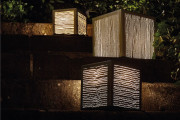 2019-07-22
2019-07-22
LED technology enables a wider range of lighting applications, including various types of luminaires. A German company, LUCEM, created a material of light-emitting concrete which is made of layers of transmitting optical fibers. The material allows designers to break the limitation of luminaires for more flexible and creative architecture and interior design.
(Image: LUCEM)
The products are mixture of fine concrete and optical fibers. The company used thousands of fine optical fibers that are only 0.5 mm diameter, put them layers by layers with the specially designed...
Continue reading →
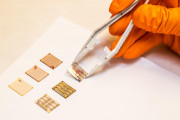 2019-07-18
2019-07-18
Scientists at Linkoping University working with colleagues from China have shown how to achieve efficient perovskite LEDs. In an article published in Nature Communications, they provide guidelines on fabricating high-quality perovskite light emitters for high-efficiency perovskite LEDs.
Since solution-processed perovskites contain large amounts of defects, which are mostly halide vacancies, efficient control of the perovskite crystallinity is required for high-performance optoelectronic devices. The research group at LiU, under the leadership of Senior Lecturer Feng G...
Continue reading →
 2019-07-15
2019-07-15
A research team led by a professor from Department of Optics and Photonics at Taiwan’s National Central University revealed a new production method for Micro LED epitaxy wafer. The team developed GaN thin film wafer under low temperature via an approach of high-energy physic. According to the researchers, the method would cost only one tenth of the current Micro LED production cost and could be applied for mass production.
(Image:NCU)
By combining data analysis and semiconductor manufacture process, the researchers aim to find innovative approaches for M...
Continue reading →
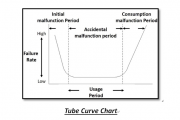 2019-07-12
2019-07-12
In 2008, MEAN WELL officially released the first LED power supply – CLG-150 series and stepped into the potential LED market. Until now, the selling quantity of LED related products is uncountable. Having a special opportunity, MEAN WELL received several pieces of the CLG-150 products which were manufactured in 2008. A detailed investigation and analysis were executed, and the result is shared below.
The number of the components could be from dozens to hundreds depends on the wattage and topology of power supply. Each component is applied to the ...
Continue reading →
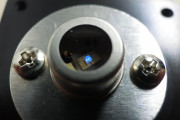 2019-07-10
2019-07-10
AlGaN-based DUV-LEDs are receiving much research attention due to their potential use in sterilization, water purification, phototherapy, and sunlight-independent high-speed optical communication. Scientists are investigating ways to improve their efficiency in converting electrical energy into optical energy.
Deep UV LEDs made from AlGaN efficiently transfer electrical energy to optical energy due to the growth of one of its bottom layers in a step-like fashion. This finding, published in the journal Applied Physics Letters, can lead to the development of even more...
Continue reading →
 2019-07-10
2019-07-10
Researchers at the German Helmholtz-Zentrum Dresden-Rossendorf (HZDR) have produced nanowires with operating wavelengths that can be freely selected over a wide range by altering the shell structure. Fine-tuned nanowires are able to improve efficiency of various optoelectronic components, making LEDs more colorful and solar cells more efficient, in addition to speeding up computers. The research results were published in Nature Communications in June.
Nanowires can be used for miniaturized photonic and electronic components in nanotechnology. Applications include optic...
Continue reading →
 2019-07-09
2019-07-09
Micro LED technology breakthroughs continue to progress in order to tackle challenges occurred in different manufacture process. At Micro LEDforum 2019, professionals in industry introduced their progresses of various technologies for a wide range of Micro LED applications. Yen-Hsiang Fang at Consortium for Intelligent Micro –assembly System (CIMS) of Taiwan’s Industrial Technology Research Institute (ITRI) presented the developments of the organization. ITRI began to build up its full color Micro LED display technology since ...
Continue reading →
 2019-07-08
2019-07-08
LEDinside’s annual event, Micro LEDforum, has again gathered many experts in the industry and academia to share about their technological expertise and provide penetrating insights of products and applications in the current Micro LED landscape.
The event started with Roger Chu, Research Director of LEDinside, delved into the development of the panel industry. He pointed out that panel production has outpaced market demand, causing furious competition and pushing manufacturers to focus on developing new display technology or improving the functionalities of the...
Continue reading →
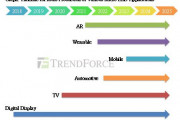 2019-07-03
2019-07-03
LEDinside, a division of TrendForce, holds the annual pivotal conference, Micro LEDforum 2019: Key Technology and Application Market, yesterday (July 2nd) at the National Taiwan University Hospital International Convention Center. Invited were Rohinni, TORAY, Konica Minolta, PARC, Plessey, Kyung Hee University, Macroblock, Ultra Display, the Industrial Technology Research Institute (ITRI) and other leading manufacturers and experts at home and abroad to give penetrating analyses into the breakthroughs, applications and business opportunities o...
Continue reading →
 2019-06-28
2019-06-28
Congratulations Macroblock on 20th anniversary! Our 20th anniversary is an opportunity to honor to celebrate and look ahead to what's next. We celebrated our 20th anniversary with a grand event addressing the future of micro-LED technology development and highlighting its contribution as a key to the next five years. This event is held on 27th of June at Shangri-La's Far Eastern Plaza Hotel in Taipei and offering full-day sessions. "In honor of celebrating Macroblock 20th anniversary, we hold this forum for ‘Next Five Years of LED Display Techn...
Continue reading →
 2019-09-18
2019-09-18
 2019-09-17
2019-09-17
 2019-09-16
2019-09-16
 2019-09-11
2019-09-11
 2019-09-09
2019-09-09
 2019-09-09
2019-09-09
 2019-09-06
2019-09-06
 2019-09-05
2019-09-05
 2019-09-04
2019-09-04
 2019-09-03
2019-09-03
 2019-08-26
2019-08-26
 2019-08-19
2019-08-19
 2019-08-12
2019-08-12
 2019-08-06
2019-08-06
 2019-08-01
2019-08-01
 2019-07-31
2019-07-31
 2019-07-25
2019-07-25
 2019-07-25
2019-07-25
 2019-07-24
2019-07-24
 2019-07-22
2019-07-22
 2019-07-18
2019-07-18
 2019-07-15
2019-07-15
 2019-07-12
2019-07-12
 2019-07-10
2019-07-10
 2019-07-10
2019-07-10
 2019-07-09
2019-07-09
 2019-07-08
2019-07-08
 2019-07-03
2019-07-03
 2019-06-28
2019-06-28